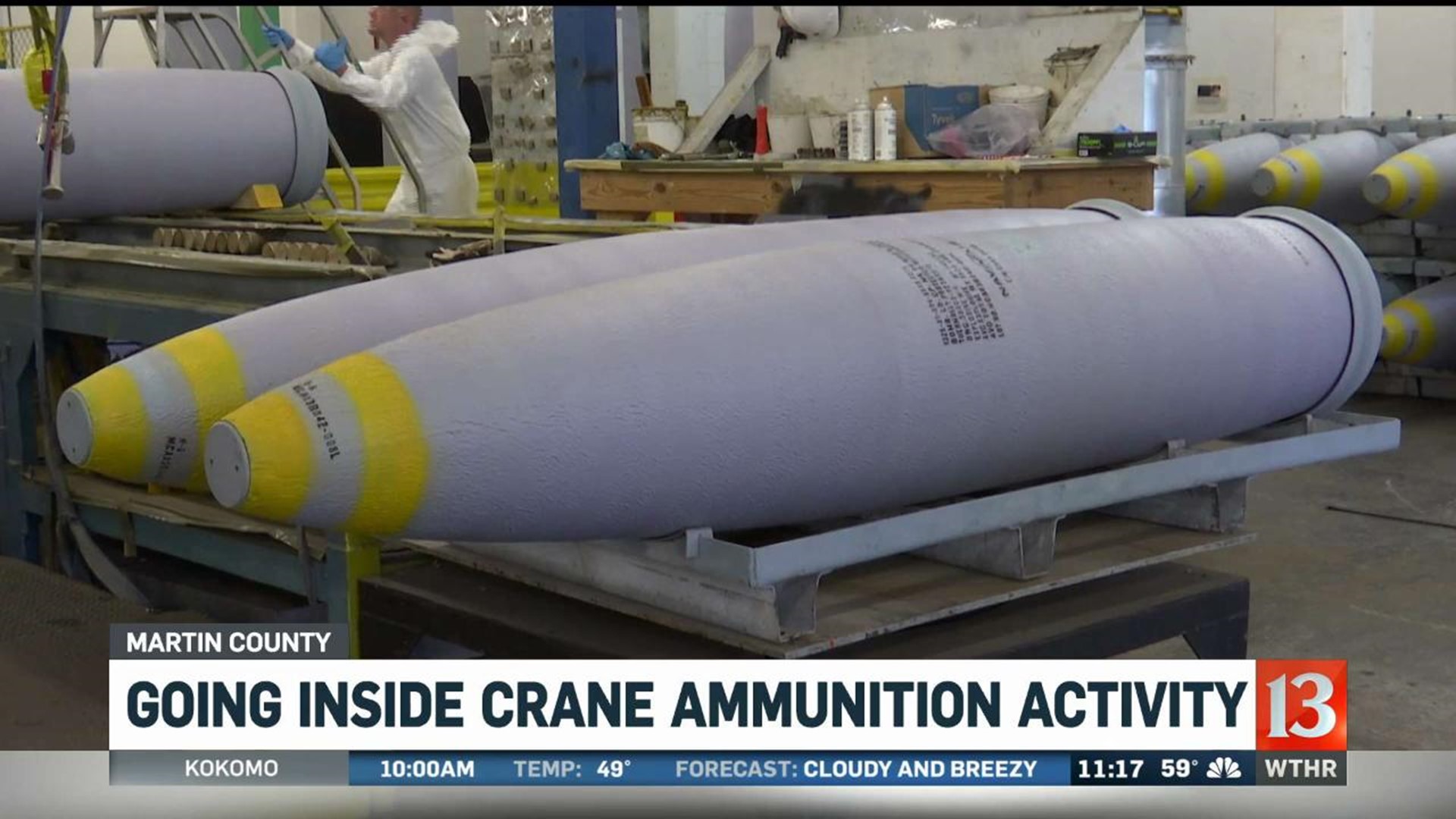CRANE, Ind. (WTHR) – The United States Army takes care of and provides the ammunition for all of the armed forces. One-quarter of the military's conventional ammunition worth $9.8 billion is stored in 1,800 locations around the Crane Army Ammunition Activity in Martin County in southern Indiana.
"I take great pride in what I do at the end of the day knowing that my mission is to get the material out to the warfighter so they accomplish their mission,” said Material Handler Supervisor Steven Smiley, who has worked at Crane for 29 years.
The workforce of about 800 civilians is responsible for inventory, inspection, and production of ammunition, as well as destruction of unusable ammunition.
"Without the hard-working Hoosiers that come here every day, roll up their sleeves and get the job done, we couldn't do what we do here," said Col. Mike Garlington, Crane Army Ammunition Activity Commander. "And what we do here is pretty awesome. It is spectacular when you look at the grand scheme of the ammunition that we receive, store, issue, surveil, manufacture and demilitarize on a daily basis."
Two-thousand-pound bombs, some as old as the 1970s, are renovated at a cost savings of about $10,000 each over new bombs. The bombs come from Navy ships where salty air causes rust and degrades the thermal coating. Crane Army restores the bombs to like new at a cost of $1,000 per bomb.
Inspectors ensure quality before any ammo leaves Crane. Munitions in storage are sampled and tested to maintain quality standards.


"We're the last eyes," said Jessica Cheeley, Quality Assurance Specialist Ammunition Surveillance. "So that when the warfighter gets it, they don't have any questions. As my shirt says 'Click- Bang-Freedom'. That when they open it up, when they click and hit that trigger it does what it's supposed to do to and goes bang to ensure our freedom."
Damaged or outdated ammunition goes up in smoke at the Ammunition Burning Ground, where a fireball can be seen about once minute all day long as propellent is burned off in a huge, enclosed pit. Unwanted explosives are buried before detonation. Unusable munitions degrade over time and can become dangerous. Destroying unusable munitions also frees up storage at Crane for working munitions.
Crane is a naval base, the third largest in the world. But the Army Ammunition Activity takes up 51,000 of the 64,000 acres of the massive facility.
Crane opened in 1941 as a naval ammunition depot located safely inland from invasion threats during World War II. The Army took over all ammunition activity in 1977.

